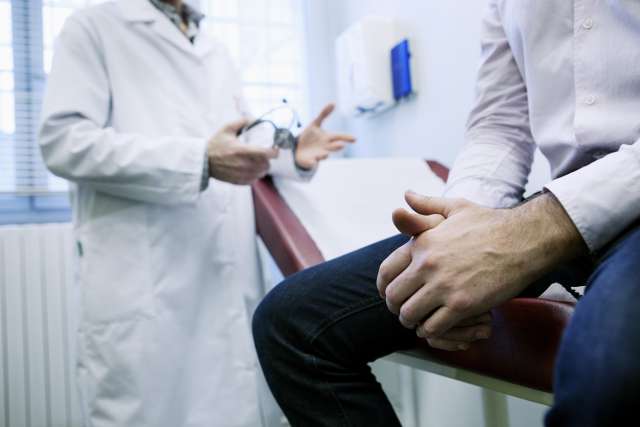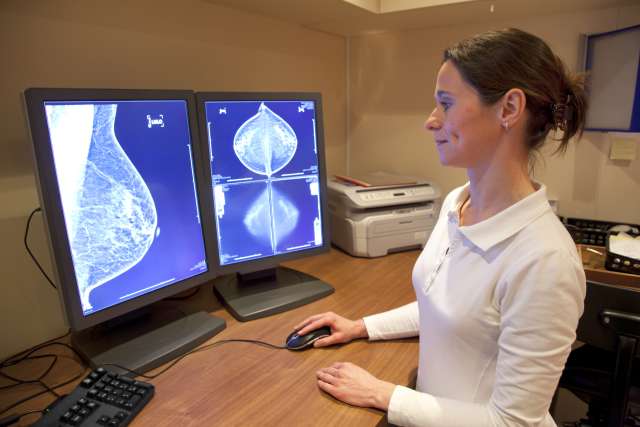Colorectal cancer-screening guidelines, which previously recommended starting at age 50, have been lowered to 45 for average-risk adults. The change stems from an increase in the incidence of colorectal cancer in adults younger than 50, a trend that has received national attention. From around 2000 to 2016, incidence of colorectal cancer among adults aged 40-49 has increased by almost 15%, according to the U.S.Preventive Services Task Force. In addition, colorectal cancers are being diagnosed in younger adults at more advanced stages; researchers have not yet determined the cause of these trends. Lisa D. Lin, MD, MS, a UCLA Health gastroenterologist in Beverly Hills, and Elliott Birnstein, MD, a UCLA Health gastroenterologist in downtown Los Angeles, answer common questions about colorectal cancer screening.
What is the benefit of colon cancer screening?
“Colon cancer screening with a colonoscopy allows us to find and remove polyps that might develop into cancerous tumors,” Dr. Birnstein says. “Because colorectal cancer doesn’t always have symptoms in its early stages, it is important to get screened according to our current guidelines.” Colonoscopy remains the gold standard because if polyps or suspicious lesions are found, they can immediately be removed. If the patient has a good prep and there are no polyps, it is recommended that the test be repeated in 10 years. Recommendation for the time interval for a patient’s next colonoscopy may be shorter depending on the number, size and types of polyps found or if the patient has a family history of colon cancer in a parent or sibling. Dr. Lin notes that there are also two kinds of at-home stool-based tests. The FIT(fecal immunochemical test) test looks for blood in the stool and must be repeated annually. The multitarget stool DNA test detects blood and certain DNA alterations in the stool is recommended every three years. Although a multitarget stool DNA test may better detect some types of polyps, it is more expensive than a FIT test and has slightly more potential for a false positive result. Another option is CT colonography. Similar to a colonoscopy, the patient does a full bowel prep, followed by a CT scan. The test is given every five years. If findings are positive, the individual needs to follow up with a colonoscopy. Someone with a family history of colon cancer or advanced colon polyps in first degree relatives should have a colonoscopy rather than a stool-based test.
What are the risk factors for colon cancer, and how do they affect screening guidelines?
“The main risk factors for colorectal cancer are age and genetics,” Dr. Lin says. “Individuals with a first-degree relative — a parent, sibling or child — who had colon cancer or an advanced polyp at an age less than 60 should get a colonoscopy screening every five years starting10 years earlier than the age at which the family member was diagnosed or at age 40, whichever is earlier.” Diet also can be a factor. Eating red meats and processed meats may increase the risk of developing colon cancer. Lack of physical exercise, being overweight and consuming alcohol and/or tobacco also are risk factors.
Are some racial or ethnic groups more prone than others to colorectal cancer?
According to the American Cancer Society, American Indian and Alaska Native people have the highest rates of colorectal cancer in the U.S., followed by African Americans. Jews of Eastern European descent have one of the highest colorectal cancer risks of any ethnic group in the world.
What are the symptoms of colon cancer?
“Colon cancer often has no symptoms until its late stages, which is why screening is so important,” Dr. Birnstein says. “Talk to your doctor if you experience changes in bowel habits or stool appearance, blood in the stool, anemia or changes in weight and appetite.”
How can I make colonoscopy prep easier?
“It’s important to hydrate,” Dr. Lin says. “You can drink clear liquids, such as broth or electrolyte water. The prep is the toughest part. The procedure itself is over in 30 minutes.”




